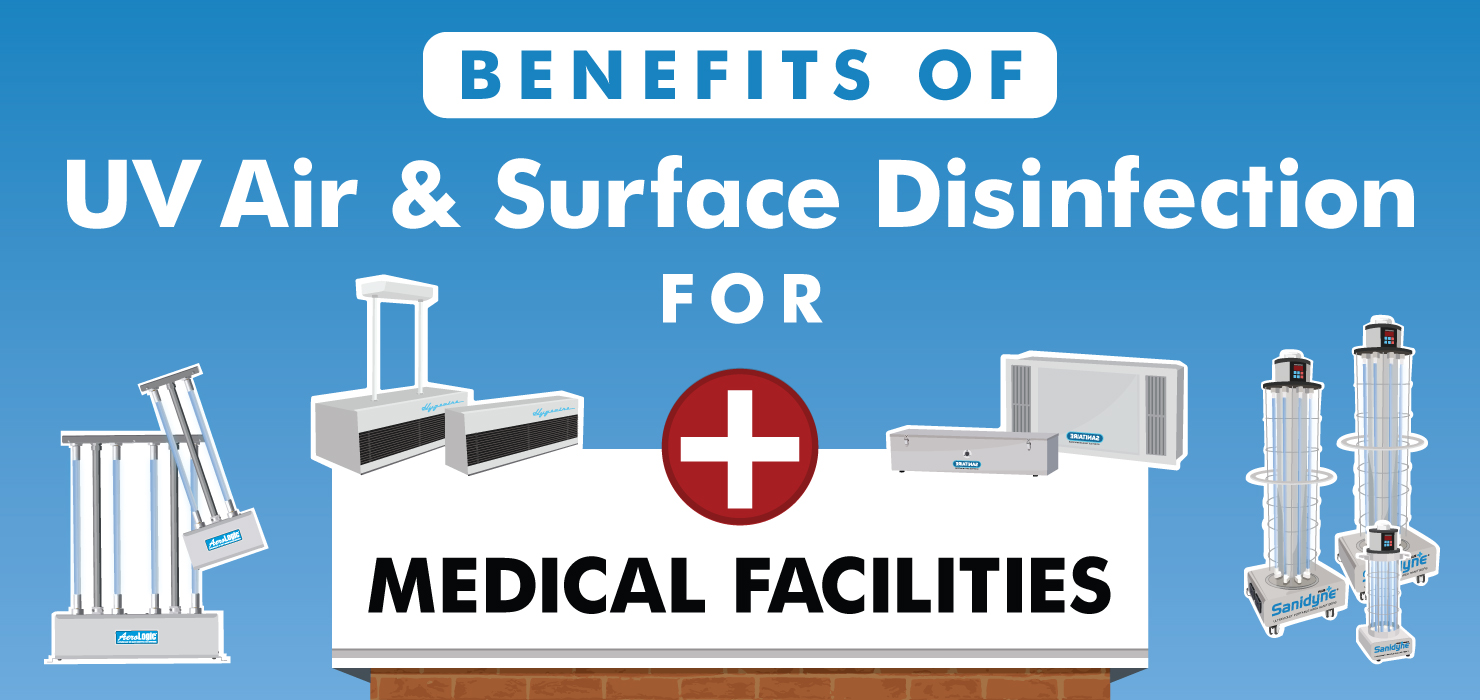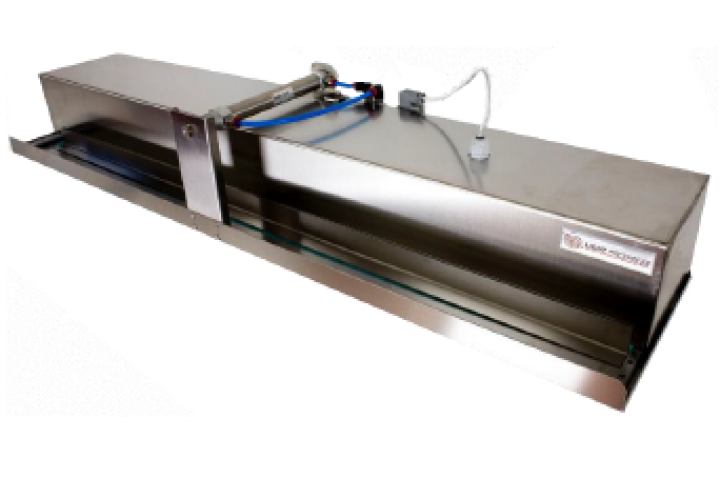Far-UVC UV Sanitizers: Enhancing Health Protocols with Precision and Performance
Wiki Article
Discovering the Advantages of Far UVC Light: Changing Indoor Air Top Quality
One such option that has actually obtained focus is Much UVC light. Exactly how exactly does Far UVC light job? In this discussion, we will certainly discover the fascinating globe of Far UVC light and reveal its capacity in changing the way we secure our indoor atmospheres.Just How Much UVC Light Functions
Much UVC easy work by sending out short-wavelength ultraviolet light that has the capacity to penetrate and inactivate bacteria. Unlike standard UV light, which can be damaging to human skin and eyes, much UVC light has a much shorter wavelength that is absorbed by the external layers of human skin, preventing it from getting to the underlying living cells. This makes it a risk-free and reliable choice for continual disinfection in occupied rooms.When much UVC light is produced, it connects with the DNA and RNA of microbes, including microorganisms and viruses, interrupting their capacity to reproduce and triggering them to come to be inactive. The high energy of the short-wavelength light problems the molecular structure of the hereditary product, preventing the bacteria from spreading out and recreating.

Additionally, much UVC light can be easily integrated into existing illumination fixtures, making it an economical remedy for a vast range of applications, including health care centers, colleges, offices, and mass transit. Its capability to constantly decontaminate occupied spaces without posing a danger to human health makes much UVC light an appealing technology in the field of interior air quality management.
Far UVC Light's Effect on Airborne Pathogens
The effect of far UVC light on airborne pathogens is substantial in decreasing the transmission of transmittable diseases and boosting interior air quality. Far UVC light refers to a certain variety of ultraviolet light that has a wavelength between 207 and 222 nanometers. Unlike traditional UVC light, which is unsafe to human skin and eyes, much UVC light has been located to be secure for human beings while still being reliable against virus.Studies have actually revealed that far UVC light has the ability to inactivate a large range of airborne infections, consisting of the influenza infection and the coronavirus (far-uvc). These pathogens are transferred via breathing droplets, and by making use of far UVC light, it is possible to decrease their feasibility and avoid their spread
One of the vital benefits of making use of far UVC light is its capability to reach all locations of a space. Unlike other disinfection approaches that might have restricted reach, far UVC light can be set up in above lighting components, ensuring that the entire room is treated. This makes it especially efficient in congested areas such as healthcare facilities, schools, and mass transit.
Moreover, much UVC light can be utilized continually without posturing a threat to human wellness. It can be executed as component of a thorough approach to boost interior air top quality by reducing the concentration of air-borne microorganisms. By incorporating far UVC light into existing air flow systems, it is possible to create safer and much healthier interior settings.
Health And Wellness Conveniences of Far UVC Light
Making use of much UVC light gives numerous wellness advantages, making it a useful tool in promoting public health and wellness and security. Much UVC light has been found to efficiently eliminate air-borne pathogens, such as bacteria and viruses, without harming human skin or eyes. This makes it an optimal service for sanitizing indoor atmospheres and lowering the risk of infections.One of the essential health and wellness benefits of much UVC light is its ability to battle the spread of air-borne illness. Studies have revealed that far UVC light can efficiently suspend viruses like flu and tuberculosis. By setting up much UVC light components in public rooms, such as offices, medical facilities, and colleges, the transmission of these diseases can be dramatically reduced.
Furthermore, far UVC light has actually been located to be secure for continual exposure, as it does not create skin damage or read this article enhance the danger of skin cancer cells. This is due to the truth that far UVC light has a limited variety of penetration in human skin, avoiding any type of injury to much deeper layers.
In enhancement to its straight effect on air-borne microorganisms, far UVC light can also have indirect health advantages. By reducing the presence of unsafe bacteria in the air, it can boost interior air quality, leading to a reduction in respiratory symptoms and allergies.
Far UVC Light's Function in Minimizing Irritants

Far UVC light, with its wavelength in the series of 207 to 222 nanometers, has actually been confirmed to be reliable in suspending infections, bacteria, and fungis. Recent studies have actually additionally shown that it can effectively reduce the visibility of irritants in interior spaces. When much UVC light is released, it engages with the DNA and RNA of microbes, harming their genetic material and stopping their replication.
Much UVC Light's Possible in Public Spaces
With its proven efficiency in lowering irritants and inactivating bacteria, much UVC light holds great potential for application in public areas. Public areas, such as hospitals, offices, institutions, and flight terminals, are typically crowded and susceptible to the spread of air-borne conditions. Integrating far UVC light innovation in these areas can try these out substantially boost interior air quality and reduce the transmission of hazardous pathogens.One promising application of far UVC light in public spaces remains in air flow systems - far-uvc. By mounting much UVC lamps in heating and cooling systems, the modern technology can decontaminate the air as it circulates, properly lowering the focus of air-borne viruses and microorganisms. This approach can help protect against the spread of diseases such as covid-19, tuberculosis, and flu, promoting a much healthier and safer setting for residents
Furthermore, far UVC light can be utilized in the disinfection of regularly touched surface areas. High-touch locations in public rooms, such as doorknobs, hand rails, and elevator switches, can harbor a multitude of pathogens. By strategically putting much UVC lights in these areas, the technology can continuously disinfect surfaces, lowering the danger of contamination and transmission.
Furthermore, the use of much UVC light in public areas is risk-free for human exposure. Unlike conventional UVC light, which can be damaging to human skin and eyes, far UVC light has actually been confirmed to be safe and non-toxic for constant procedure in occupied areas. This makes it an optimal remedy for enhancing interior air quality without posing any health risks to individuals.
Verdict

Far UVC light works by producing short-wavelength ultraviolet light that has the capacity to penetrate and suspend microorganisms. Unlike standard UV light, which can be hazardous to human skin and eyes, much UVC light has a shorter wavelength that is taken in by the external layers of human skin, preventing it from getting to the underlying living cells. Much UVC light refers to a certain array of ultraviolet light that has a wavelength between 207 and 222 nanometers. Unlike standard UVC light, which is dangerous to human skin and eyes, far UVC light has been located to be safe for people while still being reliable against microorganisms.
Unlike standard UVC light, which can be harmful to human skin and eyes, far UVC light has actually been proven to be non-toxic and risk-free for continuous operation in occupied areas.
Report this wiki page